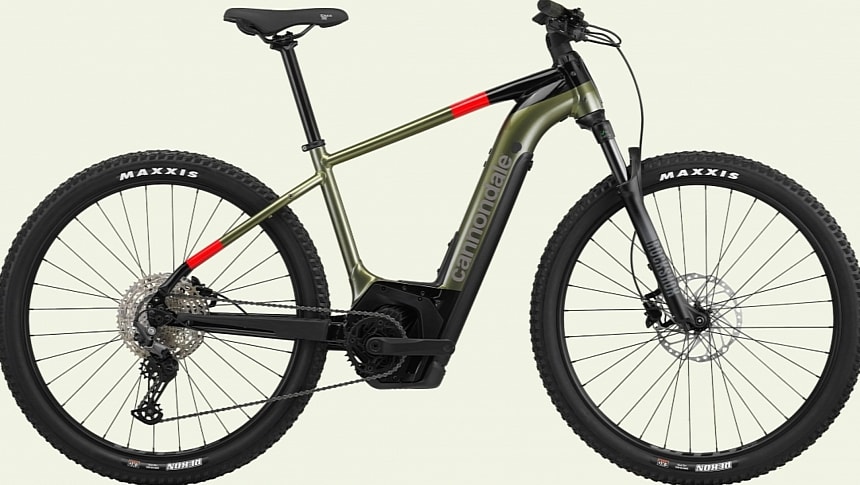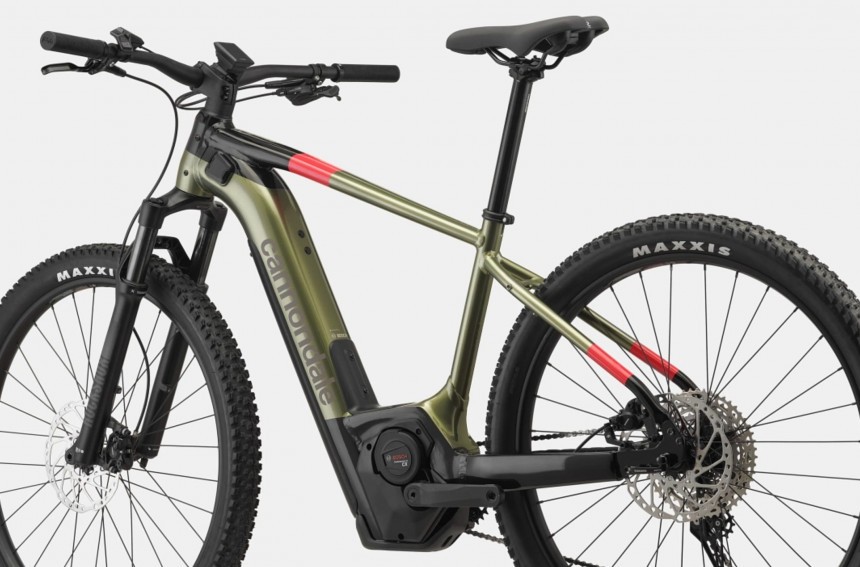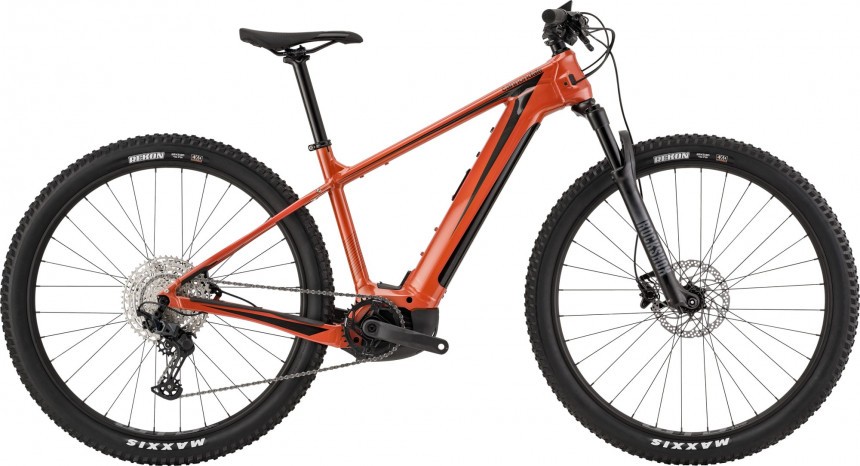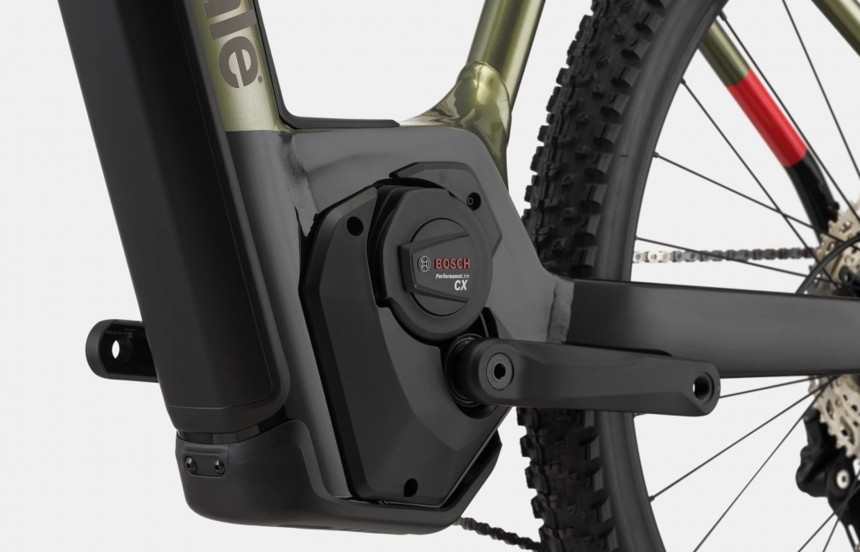A few years ago, we got word of Cannondale's Trail Neo 1, and this time around, we check back on the model to see where things have gone. May I add that I was surprised, to say the least.
Folks, the oversized hunk of aluminum we see in the image gallery is nothing more than Cannondale's Trail Neo 1, a hardtail e-MTB designed to "raise your game and ignite a passion for the trail." Simple enough if you ask me, but is it what we want and need to take cycling to the next level?
To answer that question, let's start our exploration with nothing other than the backbone for this bike or the frame. As mentioned, this component is completed from nothing other than aluminum and even prepared for internal cable routing, but that's not where the real magic lies.
As we look closer at the Neo 1, we can see a trail MTB geometry shining through, but if we direct our attention to the rear, we'll notice that the seat stay sits a tad lower on the seat tube than the top tube, a feature often present on gravel-munching bicycles. Sure, it's not as prominent as on a gravel bike, but as Cannondale puts it, it results in a "responsive rear-end."
Now, there's no way to deny that the BB on this bike is absolutely huge, and that's due to the massive motor that Cannondale has chosen for this EV. That would have to be Bosch's Performance Line CX, one of the freshest from the German powerhouse and capable of granting 85 Nm (63 lb-ft) of torque. All that's supported by Bosch's SmartSystem, so expect your ride to be optimized at all times.
But why is this feature making the frame bulge in such a way? After all, the previous model looked nice and sleek. Well, I asked myself the same questions, so I dove deeper. As I explored what was going on, I realized a few things. The first is that this frame supports Bosch's largest battery, a 750 Wh PowerTube, and that requires a frame that won't buckle once it hits its first root.
Couple that with the motor, and you need to reinforce the frame, and that's just what Cannondale did. The downtube extends well being the motor housing, offering the precious reinforcement I mentioned, but also protects the unit from debris you might smash into.
This also creates a low center of gravity for this chunky two-wheeler, and that's bound to be amazing on the trails. Oh, and together, the battery and motor can offer up to 175 km (109 mi) of range, which, if you ask me, is more than enough for a few rides before charging up again.
Best of all, Cannondale took the frame they crafted for this bike and also added cargo rack and fender mounts to it. Why is this a notable feature? Well, it allows us to transform the Neo 1 into more than just an e-bike; it can be a cargo mule. Be it for carrying your laptop to work and groceries on the way home or for helping you ride to the edge of town and camping out overnight; the Neo 1 can handle it.
As for the rest of this beast, the manufacturer added a RockShox 35 Silver fork with 100 mm (4 in) of travel and sitting at a rather slack 68 degrees, dictated by the headtube, and Shimano is responsible for the rest of the drivetrain. They're bringing a Deore setup tuned to 12 speeds and running a 10-51T cassette.
Regarding brakes, I loved the fact that Cannondale threw on plenty of stopping power, as any e-bike should include, and Tektro is responsible for all the magic with 203 mm (7.1 in) rotors and 4-piston hydraulic chompers to bite down and stay down. You'll also be riding over all that with tires tuned to 29 inches, all except the size S frame; that one's rocking 27.5s.
Take all that, throw on a few extras here and there, and what do we have? Well, we're looking at one hell of a powerful and capable machine, but is it worth the bucks, and just how much is it going to cost? For starters, allow me to point out that this bugger has been found priced all over the board, mainly because you're going to get your hands on one via a dealership.
But, on average, you can expect to drop around $5,000 (€4,600 at current exchange rates) on a new piece, and that alone might be the only problem we encounter with the Trail Neo 1. Most people, the ones not riding to bring home gold medals, typically have a budget limit of around $2,000, and this one is two and a half times that budget. That could be one of the main reasons why we aren't seeing a whole bunch of people rocking these around town or on trails. Just a little something to consider if you're in the market for an e-bike.
To answer that question, let's start our exploration with nothing other than the backbone for this bike or the frame. As mentioned, this component is completed from nothing other than aluminum and even prepared for internal cable routing, but that's not where the real magic lies.
As we look closer at the Neo 1, we can see a trail MTB geometry shining through, but if we direct our attention to the rear, we'll notice that the seat stay sits a tad lower on the seat tube than the top tube, a feature often present on gravel-munching bicycles. Sure, it's not as prominent as on a gravel bike, but as Cannondale puts it, it results in a "responsive rear-end."
But why is this feature making the frame bulge in such a way? After all, the previous model looked nice and sleek. Well, I asked myself the same questions, so I dove deeper. As I explored what was going on, I realized a few things. The first is that this frame supports Bosch's largest battery, a 750 Wh PowerTube, and that requires a frame that won't buckle once it hits its first root.
Couple that with the motor, and you need to reinforce the frame, and that's just what Cannondale did. The downtube extends well being the motor housing, offering the precious reinforcement I mentioned, but also protects the unit from debris you might smash into.
Best of all, Cannondale took the frame they crafted for this bike and also added cargo rack and fender mounts to it. Why is this a notable feature? Well, it allows us to transform the Neo 1 into more than just an e-bike; it can be a cargo mule. Be it for carrying your laptop to work and groceries on the way home or for helping you ride to the edge of town and camping out overnight; the Neo 1 can handle it.
As for the rest of this beast, the manufacturer added a RockShox 35 Silver fork with 100 mm (4 in) of travel and sitting at a rather slack 68 degrees, dictated by the headtube, and Shimano is responsible for the rest of the drivetrain. They're bringing a Deore setup tuned to 12 speeds and running a 10-51T cassette.
Take all that, throw on a few extras here and there, and what do we have? Well, we're looking at one hell of a powerful and capable machine, but is it worth the bucks, and just how much is it going to cost? For starters, allow me to point out that this bugger has been found priced all over the board, mainly because you're going to get your hands on one via a dealership.
But, on average, you can expect to drop around $5,000 (€4,600 at current exchange rates) on a new piece, and that alone might be the only problem we encounter with the Trail Neo 1. Most people, the ones not riding to bring home gold medals, typically have a budget limit of around $2,000, and this one is two and a half times that budget. That could be one of the main reasons why we aren't seeing a whole bunch of people rocking these around town or on trails. Just a little something to consider if you're in the market for an e-bike.












